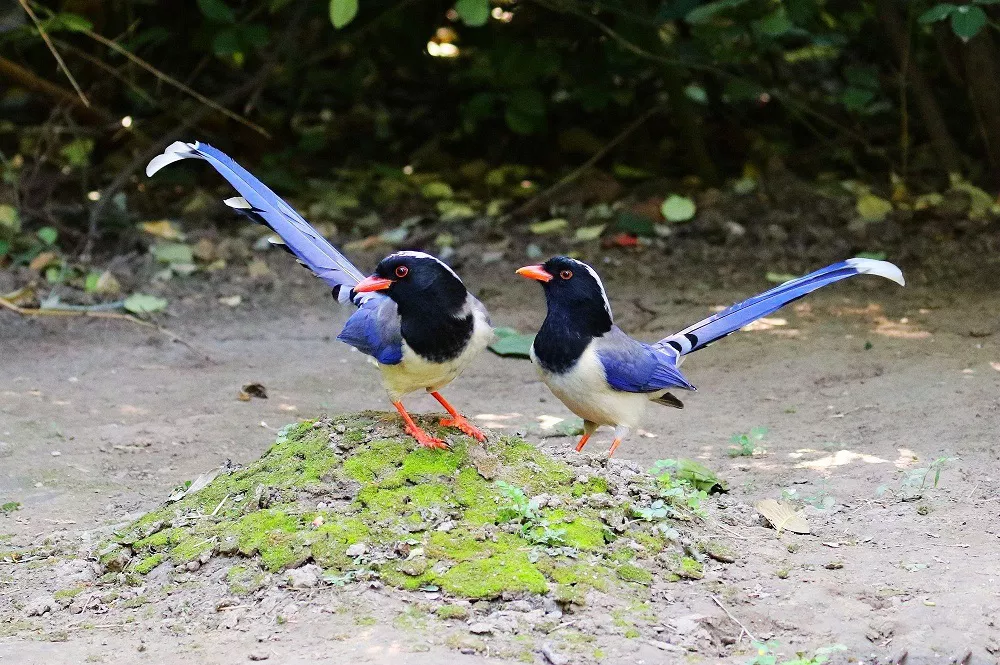The Red-Billed Blue Magpie (Urocissa erythroryncha) is an eye-catching and charismatic bird species known for its stunning plumage and distinctively long tail. Belonging to the crow family (Corvidae), this avian beauty is native to certain regions of Asia. In this article, we will explore the origins and range of the Red-Billed Blue Magpies, shedding light on their natural habitats and geographical distribution.
Geographical Distribution:
The Red-Billed Blue Magpies are primarily found in the eastern regions of the Asian continent. Their distribution spans across various countries, including:
India: The Red-Billed Blue Magpies are native to northeastern India, particularly in the states of Arunachal Pradesh, Assam, Meghalaya, and Manipur. These areas provide the suitable habitats necessary for their survival and breeding.
Bhutan: These colorful magpies are also present in the mountainous country of Bhutan, where they inhabit forests and wooded areas, especially in the foothills of the Himalayas.
Nepal: The Red-Billed Blue Magpies can be found in certain regions of Nepal, particularly in the eastern and central parts of the country. They are known to occupy subtropical and temperate forests.
Tibet and China: These magnificent birds are distributed across various provinces of China, including Tibet, Sichuan, Yunnan, and Gansu. They inhabit forests, woodlands, and bamboo groves in these regions.
Habitat Preferences:
The Red-Billed Blue Magpies are primarily forest-dwelling birds, favoring diverse habitats with a mix of trees and understory vegetation. They are commonly found in subtropical and temperate forests, as well as wooded areas near rivers and streams. These birds are known to thrive in montane forests, bamboo thickets, and wooded foothills.
Deciduous Forests: Red-billed Blue Magpies are frequently seen in deciduous forests characterized by a mix of broadleaf trees that shed their leaves seasonally. These forests offer a diverse array of food sources, including fruits, insects, small reptiles, and seeds. The presence of tall trees provides nesting sites and protection from predators.
Montane Forests: These birds also thrive in montane forests, which are high-altitude environments with cooler temperatures. Montane forests typically consist of coniferous trees interspersed with broadleaf species. The rich biodiversity of these forests allows the magpies to find ample food, including berries, nuts, and caterpillars.
Bamboo Groves: Another favored habitat of the Red-billed Blue Magpie is bamboo groves. These birds are well-adapted to navigating through dense bamboo thickets, using the tall grass-like stems for cover. Bamboo groves offer a wealth of insects, spiders, and berries, making them an ideal foraging ground.
Characteristics and Behavior:
The Red-Billed Blue Magpie possesses distinct physical features that set it apart from other bird species:
Plumage: These magpies exhibit a striking combination of colors. They have a deep blue-black plumage on their head, back, and upperparts. The wings and tail feathers are a vivid blue, creating a dazzling contrast against the black. The underparts are white, further accentuating their vibrant appearance.
Long Tail: One of the most remarkable features of the Red-Billed Blue Magpie is its remarkably long tail, which often exceeds the length of its body. The tail feathers are blue, contributing to its overall beauty and grace in flight.
Red Bill and Legs: As the name suggests, these magpies have a conspicuous bright red bill, which contrasts with their dark plumage. Their legs are also red in color.
Behavior: Red-Billed Blue Magpies are social and highly vocal birds. They are known for their loud calls and melodious songs, which are often heard during territorial displays and mating rituals. They are also skilled flyers, with agile and acrobatic movements in the air.
Conservation Status:
The Red-Billed Blue Magpies are not currently classified as a threatened species. However, habitat loss and degradation due to deforestation and human encroachment pose significant challenges to their populations. Conservation efforts are focused on preserving their forest habitats and raising awareness about their ecological importance.
Conclusion:
The Red-Billed Blue Magpies are enchanting birds that grace the forests and woodlands of eastern Asia. With their vibrant blue and black plumage, strikingly long tail, and distinct red bill, they are a delight to observe in their natural habitats. By understanding their geographical distribution and habitat preferences, we can appreciate and protect these magnificent birds, ensuring their continued presence and conservation for future generations to enjoy.


 Facebook
Facebook  Instagram
Instagram  Youtube
Youtube 